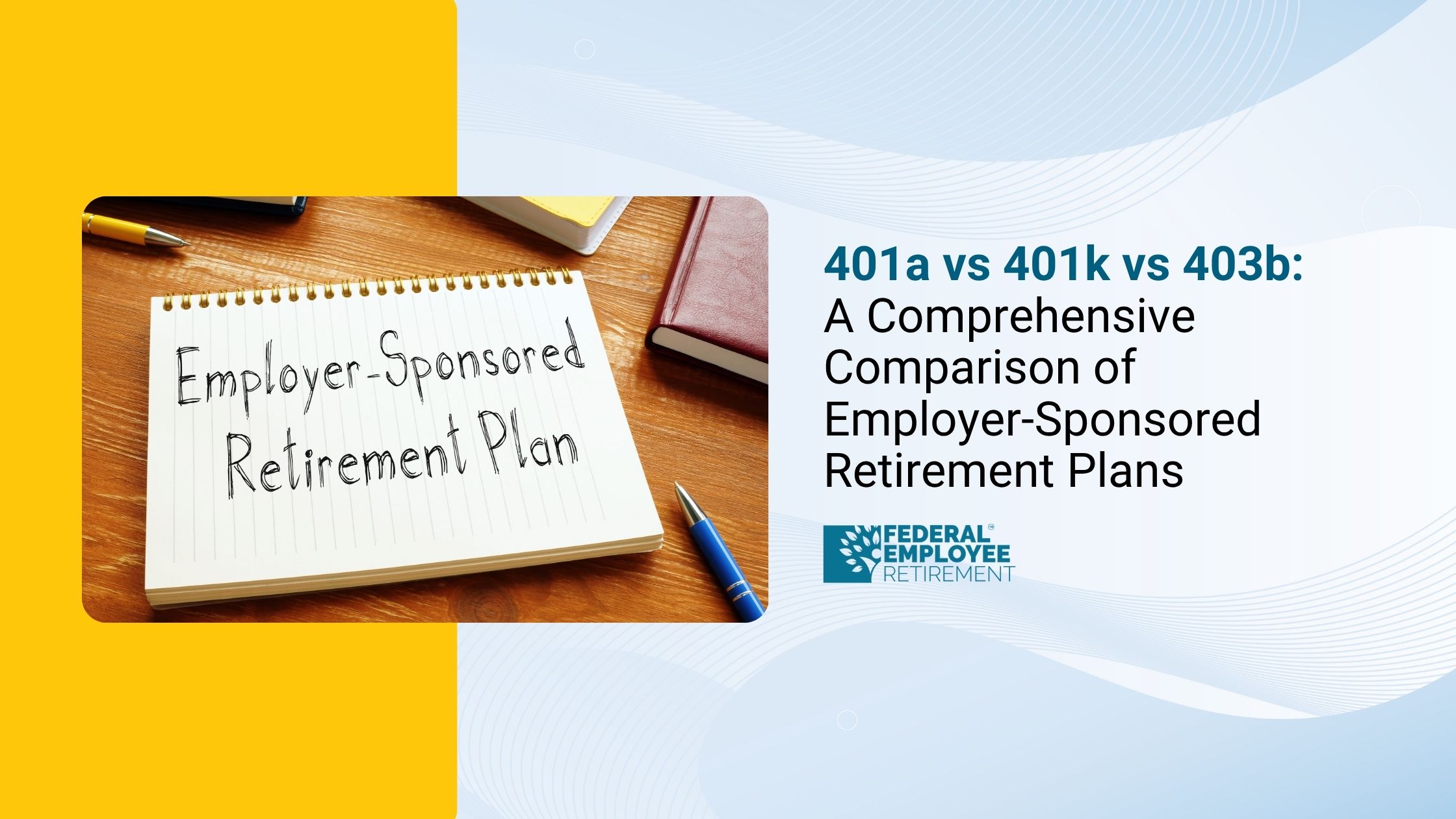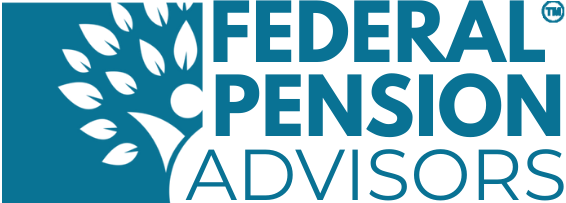You’re not alone; 4,359 federal employees booked their free review.

401a vs 401k vs 403b: A Comprehensive Comparison of Employer-Sponsored Retirement Plans
Understanding the differences between 401(a), 401(k), and 403(b) plans is essential for employees seeking to maximize their employer-sponsored retirement savings. Although these plans share certain similarities, they differ significantly in structure, eligibility, and contribution rules.
This overview outlines how each plan operates, their contribution limits and withdrawal rules, and the distinctions among 401a vs 401k vs 403b.
What is a 401a Retirement Plan?
A 401(a) plan is a retirement plan established by an employer under Section 401(a) of the Internal Revenue Code. It primarily holds employer contributions, which may be mandatory or discretionary depending on the plan design.
Employers use 401(a) plans to provide structured retirement savings benefits to employees in the public, educational, and nonprofit sectors, though private-sector employers may also utilize them. These plans can serve as the foundation for other defined contribution arrangements, including profit-sharing and money purchase plans.
How a 401(a) Plan Works
A 401(a) plan functions as a qualified retirement savings vehicle, funded primarily through employer contributions and designed to encourage long-term savings.
- Employer Control: Employers determine key plan parameters, including contribution formulas, eligibility requirements, and vesting schedules.
- Participation: Participation may be mandatory for eligible employees or voluntary, depending on plan provisions.
- Integration with Other Plans: Employers may offer a 401(a) plan alongside a 403(b) or 457(b) plan, allowing employees to receive employer-funded contributions while making elective deferrals to other accounts.
- Investment Options: Employers select the plan’s investment lineup. Participants typically direct how contributions are allocated among available investment options.
A 401(a) plan thus provides an employer-directed framework for building retirement savings, often forming the base of an employee’s overall retirement benefits package.
How 401(a) Plan Contributions Work
Employer Contributions
Employers may contribute to 401(a) plans using one of the following structures:
- Profit-Sharing Plans: The employer contributes a discretionary percentage of eligible compensation each year based on plan formulas.
- Money Purchase Plans: The employer is required to contribute a fixed percentage of eligible compensation annually.
In both cases, employer contributions are made on a pre-tax basis and grow tax-deferred until distribution.
Employee Contributions
Some 401(a) plans permit employee contributions, which may be mandatory or voluntary depending on the employer’s policy.
- Employee contributions are generally made after-tax.
- Governmental employers may “pick up” employee contributions, allowing them to be treated as pre-tax under IRS rules.
- Employee contributions are always 100% vested immediately, while employer contributions follow the plan’s vesting schedule.
Vesting
Vesting schedules determine when participants gain ownership of employer contributions.
For example:
- After two years of service, a participant may be 20% vested.
- After three years, 40%.
- After five years, 100%.
If an employee separates from service before becoming fully vested, unvested employer contributions are forfeited.
Must to read - 401k loan vs personal loan
Contribution Limits for 2025
For the 2025 plan year:
- The total combined contribution limit (employer + employee) is $70,000, or 100% of eligible compensation, whichever is less.
- The maximum compensation that may be considered for contributions is $350,000, adjusted annually for inflation.
Tax Treatment
- Employer Contributions: Made pre-tax and grow tax-deferred.
- Employee Contributions: Made after-tax unless designated as pre-tax by the employer.
Accumulate on a tax-deferred basis until distribution.
Also read - max funded iul vs 401k
401(a) Plan Withdrawal Rules
Because a 401(a) plan is a qualified retirement vehicle, withdrawals are intended for retirement or qualifying events.
- Normal Distributions: Permitted at age 59½ or upon separation from service. Distributions are taxed as ordinary income.
- Early Withdrawals: Distributions taken before age 59½ may be subject to a 10% early withdrawal penalty in addition to income tax, unless an exception applies (such as disability or specific hardships).
- Required Minimum Distributions (RMDs): Must begin at age 73, unless the participant is still employed by the sponsoring employer. Failure to take RMDs may result in a 25% penalty.
Rollovers: Participants may roll over their 401(a) balance to another qualified plan, such as a 401(k), 403(b), or traditional IRA, to maintain tax-deferred growth.
Advantages of a 401(a) Plan
A 401(a) plan provides several key benefits:
- Employer-Funded Growth: Employer contributions enhance retirement readiness without requiring employee deferrals.
- Tax-Deferred Compounding: Investment growth and earnings are not taxed until withdrawal.
- Plan Flexibility: Employers can tailor contribution formulas and combine 401(a) plans with other retirement vehicles, such as 403(b) or 457(b) plans.
Predictability: Structured, employer-defined contributions create consistent long-term savings.

401(a) vs 403(b)
Both 401(a) and 403(b) plans are employer-sponsored retirement savings vehicles but differ in eligibility, contribution structure, and flexibility.
Many nonprofit and governmental employers use both plans together the 401(a) to hold employer contributions and the 403(b) for voluntary employee deferrals.
401(a) vs 401(k)
While a 401(k) plan is technically a subtype of 401(a), there are operational distinctions between the two.
Private-sector employers typically offer 401(k) plans that combine both employee and employer contributions in a single account. In contrast, public-sector and nonprofit organizations may separate employer and employee contributions across 401(a) and 403(b) accounts for plan design flexibility.
401a vs 401k vs 403b: Summary Comparison
“Don’t Miss Out” Approach
Understanding your retirement plan options is one thing optimising them before it’s too late is another. Every year, thousands of federal and public employees lose potential retirement income simply because they didn’t align their 401(a), 401(k), or 403(b) strategies correctly. Don’t wait until retirement to find out what you could have done differently.
Book your free consultation with a Federal Pension Advisor today and make sure your retirement plan is working as hard as you are.
Key Considerations
When comparing 401a vs 401k vs 403b, it is important to review your employer’s specific plan documents and contribution policies.
- 401(a) plans are typically employer-funded, structured, and may include mandatory participation.
- 401(k) plans offer employee-driven contributions with greater flexibility and catch-up options.
- 403(b) plans serve nonprofit and educational employees, combining voluntary deferrals with potential employer contributions.
Each plan type supports long-term retirement readiness through structured savings, tax-deferred growth, and employer participation, but the rules and contribution methods differ depending on organizational type.
Final Thoughts
When comparing 401a vs 401k vs 403b, remember: the right plan isn’t about labels it’s about how it fits your career and income structure.
- 401(a) gives you a foundation funded by your employer.
- 401(k) lets you take control of your own contributions.
- 403(b) adds flexibility for nonprofit and education professionals.
Whichever combination you have, treat it as part of one bigger strategy. Learn your plan’s rules, take full advantage of employer matches, and stay mindful of tax and withdrawal timing.
We’ve seen many dedicated federal and public employees retire comfortably simply because they understood these details early and acted on them.
Related Tags:
what happens to my 401k if i die
1. What is the difference between a 401(a), 401(k), and 403(b)?
- 401(a):
A retirement plan typically offered by government agencies, educational institutions, or nonprofits. Employer contributions are usually mandatory, and employee contributions may be optional or required. The plan rules (like contribution limits or withdrawal terms) are set by the employer. - 401(k):
A retirement plan mostly offered by private-sector employers. Contributions are voluntary and made by employees from their salary (pre-tax or Roth). Employers often match a portion of the contributions. - 403(b):
Similar to a 401(k), but designed for nonprofit organizations, public schools, and certain religious institutions. Contributions are also voluntary and can be made pre-tax or Roth.
2. Is it better to have a 401(a) or a 401(k)?
It depends on your employment type and goals:
- 401(a) is better if you work for a public sector or nonprofit employer, as it often includes guaranteed employer contributions and is part of a broader pension or benefits package.
- 401(k) offers more flexibility in contribution amounts and investment choices, making it better for private-sector employees who want greater control over their retirement savings.
3. What is the difference between a 401(k) and a 401(b)?
There is no 401(b) retirement plan under the IRS code. The correct comparison is likely 401(k) vs 403(b):
- Both allow employees to contribute a portion of their salary on a tax-deferred or Roth basis.
- The main difference is the type of employer: 401(k) plans are for private companies, while 403(b) plans are for nonprofits and public institutions.
4. What are the cons of a 401(a)?
While 401(a) plans offer stability, they have a few drawbacks:
- Limited employee control: Employers decide the contribution rules, and employees may have little flexibility in how much they contribute.
- Restricted investment options: 401(a) plans often offer fewer investment choices compared to 401(k)s.
- Less portability: If you leave your job, rolling over your 401(a) to another retirement account may involve more restrictions or paperwork.
- Mandatory contributions: Some plans require contributions, which can reduce your take-home pay.
Content References
- Fidelity Investments – “What is a 401(a) plan?”
- MissionSquare Retirement – “401(a) vs. 403(b) Plans: Understanding the Differences”
- Empower Retirement – “The Difference Between a 401(k) and 403(b)”
- The Motley Fool – “401(a) vs. 403(b): Which Retirement Plan Is Right for You?”
- Human Interest – “401(a) vs. 403(b): Key Differences for Employers and Employees”
Disclaimer:
This information is provided for educational purposes only and does not constitute financial, tax, or legal advice. Plan structures, contribution limits, and eligibility criteria vary by employer and governing plan document. Employees should review their individual plan details or consult a qualified financial or tax professional before making decisions related to their 401(a), 401(k), or 403(b) retirement accounts.


Get Updated
Subscribe to our weekly updates for the latest on retirement planning, federal benefits, exclusive webinars, and more!
Download Federal Retirement: Step-by-step Checklist
This comprehensive guide will help you understand your federal benefits, optimize your savings, and plan for a comfortable future.



.png)








